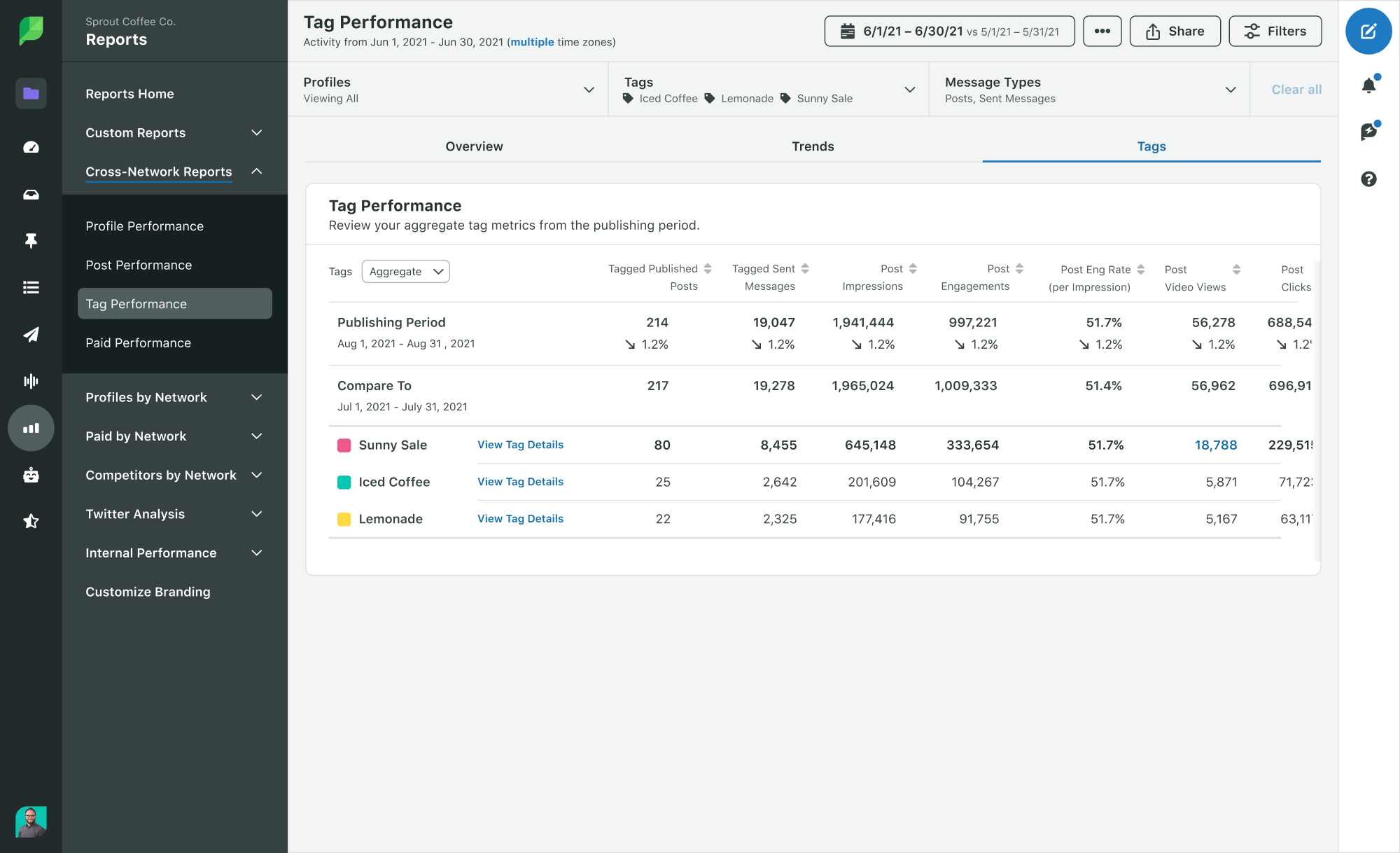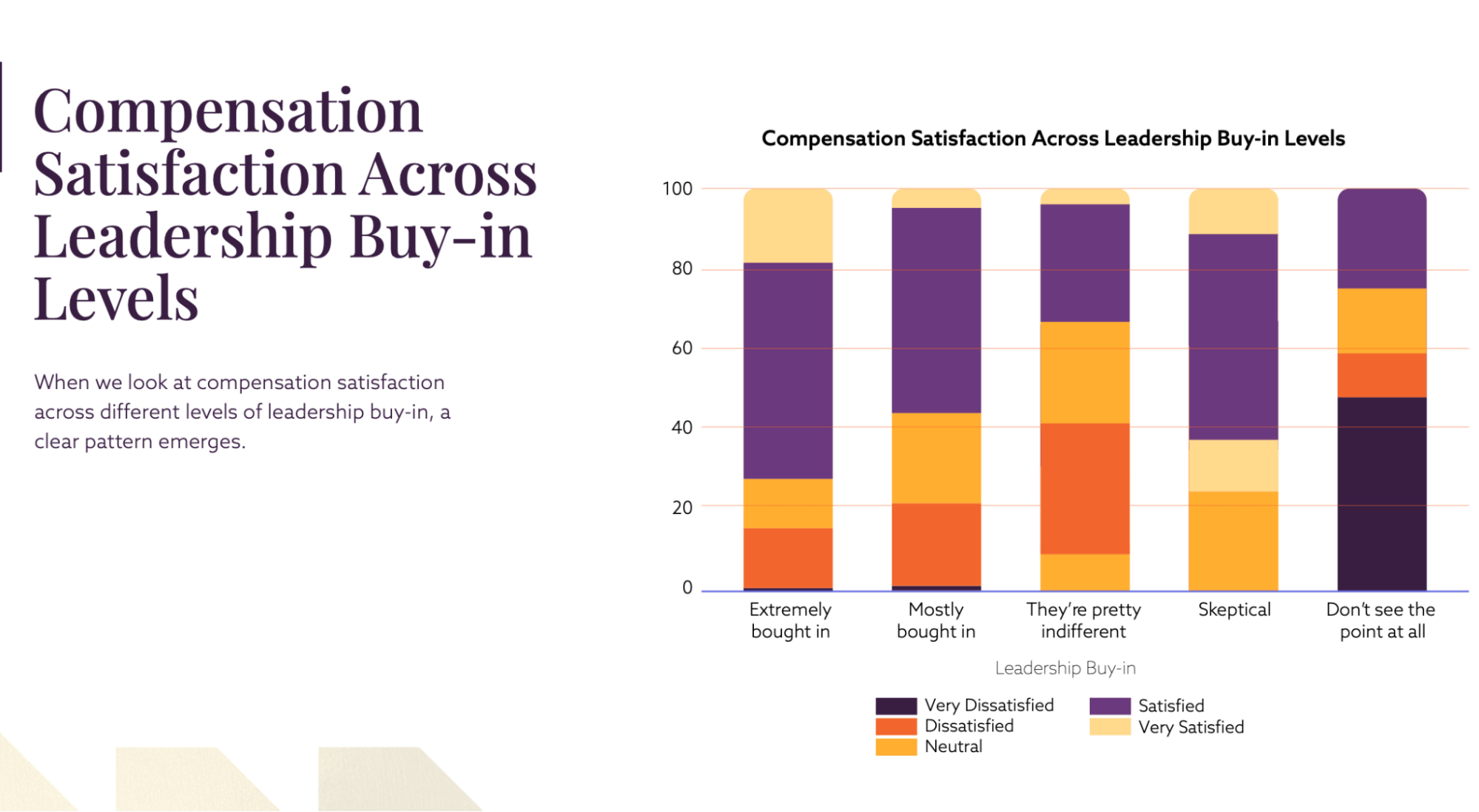Content marketing ROI: How to build and measure it

Table of Contents
Defining content marketing return on investment (ROI) isn’t a one-size-fits-all task. It’s deeply tied to your team’s specific goals—from optimizing SEO and social media ROI to supporting companywide programming like events and paid campaignsi
This reality makes pinpointing a single approach to calculating content marketing ROI difficult.
When marketing efforts span multiple teams and channels, data becomes vast and fragmented, making it challenging to consolidate and analyze for clear ROI.
A unified view of your marketing across every channel, department and customer touchpoint is crucial for accurately measuring content marketing ROI.
What is content marketing ROI?
Content marketing ROI measures the revenue your content programs generate or influence compared to your investment. You can calculate ROI for your owned media assets, such as SEO, email and organic social media. For initiatives where content plays a pivotal supporting role, such as events or paid media, it’s more realistic to track how content influences ROI rather than directly drives it.
Why content marketing ROI matters
Companies measure success through revenue—and content teams are no exception. Proving content marketing ROI involves demonstrating how content drives business forward in ways that leadership understands.
Without clear ROI, content risks becoming a cost center instead of a growth driver.
ROI also shapes your career. For example, the Content Studio’s The State of (Dis)Content report found that over half of content marketers have complicated feelings or are dissatisfied with the work they produce.
On the other hand, the report also found that confidence, fulfillment and even compensation rise sharply when leadership buys in—but leadership support requires proof of impact.
Accurately measuring ROI builds leadership trust, fosters professional satisfaction and ensures content marketing contributes to long-term business growth.
Sprout Social’s 2025 Content Benchmarks Report highlights this dynamic. In 2024, average publishing frequency dropped slightly, but engagement surged by nearly 20%—a clear sign that brands focused on content quality over quantity are reaping the rewards. As the report concludes: “Posting less doesn’t mean doing less—it means making every post, interaction and partnership more purposeful.”
This strategic shift isn’t just about metrics—it’s about connecting. When your content strategy aligns with how audiences engage, results improve, and content teams feel the difference.
Challenges of measuring content marketing ROI
Measuring content marketing ROI has always been challenging because content affects many stages of the customer journey.
A single customer might interact with several different types of content—like blogs, webinars, case studies, social posts or email newsletters—and visit your website multiple times before ever converting. Those interactions happen across different channels, devices and times, making it difficult to pinpoint which interaction influenced the sale.
Attribution models continue to effectively address this complexity, even as privacy regulations reduce the availability of third-party data. Consider pairing multi-touch attribution (MTA) with strategies like marketing mix modeling (MMM) and incrementality testing to build a clearer view of ROI. An integrated data approach—supported by the right tech stack—empowers marketers to collect, organize, attribute and analyze data more accurately.
How to calculate content marketing ROI
At its core, content marketing ROI measures how much revenue your content efforts generate compared to your costs. The basic content marketing ROI formula looks like this:
(Revenue – Investment) ÷ Investment = ROI
For example, if you spent $50,000 on content and generated $200,000 in attributed or influenced revenue, your ROI would be 300%.
Most marketing departments have a good handle on their marketing investment, which typically includes content creation, distribution and hiring a content marketing team. The real challenge is calculating return.
When content marketers struggle with attribution, they frequently focus their reporting on brand awareness or lead generation. These metrics only tell part of the story.
Getting to a figure that accurately captures return requires connecting your data to other key business metrics. Sales teams, marketing, revenue operations, finance and business intelligence (BI) teams have the revenue and attribution data you need. Work with them to:
- Ensure consistent capture of your content metrics.
- Integrate your content data with their data in platforms like Tableau, Salesforce BI or Snowflake.
- Collaborate to apply attribution across the entire dataset.
- Use the outputs of those models to calculate the revenue your content generates or influences.
Reporting may already be in place, or you may need to lead the effort to build these models. Either way, success depends on connecting your work to the larger business.
Attribution modeling
Attribution modeling, particularly multi-touch attribution (MTA), is one strategy content leaders can use to measure content marketing ROI. MTA assigns credit to different marketing touchpoints (like content) along a customer’s journey to determine which channels or actions contributed most to revenue.
Here’s how to put attribution modeling into practice:
- Integrate your data sources: Integrate platforms that collect marketing data (like Sprout, HubSpot or Google Analytics) with BI tools.
- Choose the right attribution model: Linear attribution spreads equal credit across touchpoints. Position-based attribution gives more weight to the first and last interactions while still crediting those in the middle. These models often accurately reflect the influence of content marketing.
- Select your attribution tool or build your model: If your company uses Funnel.io or Salesforce Marketing Cloud, these platforms may already include attribution modeling. If not, you may need to collaborate with your analytics teams to create a custom model within a BI platform.
- Analyze revenue contributions: Once your model is running, review the outputs to see how much revenue was generated by content marketing. Attribution modeling won’t give you a perfect number, but it will provide a directional view of your content’s impact.
Even with the ever-evolving shifts with third-party data, attribution modeling is still a critical tool for gaining clear visibility into the impact of content marketing at the campaign level.
Marketing Mix Modelling (MMM)
MMM is another strategy content leaders can use to understand how different channels contribute to revenue rather than tracking individual buyer behavior. It also accounts for the effects of external factors like economic conditions and seasonality, as well as digital marketing and non-digital efforts.
Here’s how to implement MMM:
- Gather your historical marketing and sales data: Compile several months (ideally years) of data across all marketing channels, along with sales and revenue figures. Prioritize consistent and complete data over volume.
- Categorize your data: Establish clear categories of data to ensure the model accurately attributes revenue to the right activities, such as separating blog content and social media from paid search or out-of-home ads.
- Choose your modeling approach: Applying MMM’s statistical models requires analytics expertise, whether that comes from tools like Google’s Lightweight MMM, custom regression models built in R or Python or support from an analytics agency.
- Interpret the results carefully: MMM shows the contribution of each marketing channel to revenue during a specified period. It provides a macro-level view that highlights the gradual, long-term influence on revenue.
For content leaders focused on long-term brand building and complex buyer journeys, MMM can be one of the most credible ways to demonstrate how content marketing supports revenue growth compared to other strategies.
Incrementality testing
Incrementality testing reveals the true lift of your content efforts by comparing outcomes to what would have happened without those efforts.
If you’re using incrementality testing to measure revenue lift, the process usually looks like this:
- Identify a specific content marketing program to test: Choose one initiative or piece of content—like a webinar series, gated e-book or social campaign—to measure and prove impact. Incrementality tests require focus because they’re designed to evaluate specific activities.
- Design your exposed and control groups: Create one group that gets exposed to the initiative and another group that doesn’t. For ads, this means split-testing target audiences or geo-targeted content marketing campaigns. For organic content, you can test by segmenting your email lists, regions or promotional tactics.
- Track outcomes through to revenue: Define key indicators like pipeline creation or closed deals. Ensure that your customer relationship management (CRM) platform and marketing systems track both groups through the sales process to outcomes.
- Measure the incremental lift: Compare the outcomes of the exposed group to those of the control group to demonstrate the content initiative’s actual impact. A positive lift represents the additional value your content creates.
Incrementality testing requires careful planning and consistent data collection. This approach delivers some of the clearest evidence of content marketing’s impact.
Attribution modeling, MMM and incrementality testing are most effective when used together, with each model contributing unique insights.
Tracking KPIs that influence content marketing ROI
After you calculate your baseline ROI, the next step is to figure out which key performance indicators (KPIs) signal future potential revenue. Monitoring these leading indicators enables you to optimize your efforts in real time to maximize your return.
The best KPIs for content marketing are closely tied to revenue or have a clear historical connection with it. Look at your historical data. If previous campaigns show revenue increased as impressions improved, it’s a good sign that closely tracking impressions would be worthwhile.
Here are a few key KPIs to consider:
- SEO: Growth in organic website traffic to high-intent pages, search click-through rate (CTR), bounce rate or organic sessions that engage with high-intent pages
- Email marketing: Click-to-open rate (CTOR), lead conversion rate from nurture campaigns and engagement rates on key call to action (CTA) emails
- Social media: CTR to site content or lead forms, engagement rate on meaningful actions like shares and comments and assisted conversions from social-driven sessions
- Partnerships and guest articles: Referral traffic quality (time on site or engagement), backlinks from high-authority content or the percentage of referral traffic entering nurture or sales flows
Using social media as an example, here’s how you might apply the concept of real-time optimization based on leading KPIs.
With Sprout, you can set up custom reporting focused on the metrics you’ve identified as most likely to signal movement toward revenue. The sample Instagram Engagement report below breaks down engagement by type and compares likes, comments and shares across social media campaigns.

Sprout’s Tag Performance enables you to group posts by campaign and compare overall engagement across content initiatives.

Once you’re confident in your content marketing’s ROI, your KPIs will help you explain it. For instance, if social media engagement is high on a campaign you know drove incremental revenue, that’s a good KPI to keep an eye on. If engagement is low but the revenue impact is high, you may need to investigate other relevant KPIs.
Proving content marketing ROI to stakeholders
Leadership wants to know content marketing’s ROI, but reporting content performance and benchmarks isn’t enough. The story they want to hear is the narrative behind the numbers—how they illuminate audience behavior and guide your marketing goals. For that, you need insights.
Real insights require investigation. To find them, you have to dig into how your audience interacts with your content across their entire journey. Here are some ideas on where to start:
- CTR between content (like ads, social posts and landing pages)
- Form fill rates on lead magnets or landing pages
- Organic traffic paths between blog posts, product pages and lead forms
- Differences between mobile and desktop social performance
Treat this data as a starting point to ask better questions, such as, “Where are we gaining interest but losing conversions?” or “Are certain channels more reliably moving users forward?” This is your opportunity to communicate how content marketing drives ROI, why it has that effect and how you plan to use content and these insights to move the business forward.
Expert strategies to optimize your content marketing ROI
To move ROI in the right direction, you must integrate those insights across your day-to-day execution and reporting. Here’s a process you can follow to keep improvements focused and measurable:
- Set up consistent tracking across all content marketing efforts: Use consistent UTM parameters and tags to reliably tie content programs to revenue.
- Test and measure changes deliberately: Test your hypotheses by conducting structured A/B tests that isolate which changes lead to better results in the KPIs you care about.
- Build cross-channel reporting: Build a cross-channel dashboard to spot larger patterns and decide where to focus your next optimizations.
- Validate attribution models and revenue links regularly: Audit your integrations and lead scoring quarterly for data accuracy and cost-efficiency to ensure your content delivers ROI that aligns with business goals.
- Watch for patterns AI tools can highlight: Use AI-driven content analytics tools in platforms like Sprout, Salesforce or Tableau to surface shifts in behaviors or KPIs you might otherwise miss.
To improve ROI, tighten your entire system by tracking smarter, reacting faster and implementing automation for reliable ROI calculations.
How Sprout Social boosts content marketing ROI
Measuring content marketing ROI is about more than pulling reports and hoping you’ve impacted the bottom line. It’s also about building a system for marketing success that tracks the right metrics, connects them to business outcomes and provides clear signals on what to improve next.
By integrating social media engagement, campaign performance and customer interactions, Sprout empowers you to confidently demonstrate the impact of your content marketing efforts where your audience engages most.
If you’re ready to build stronger reporting, discover strategic insights and prove your content marketing strategy’s true impact, start your free trial with Sprout today.




Share